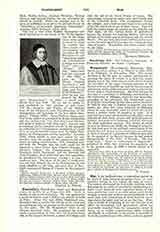

Wandelbert, Benedictine monk and theological writer, b. in 813; d. at Pram after 850. Little is known of his personal history. He was apparently a native of France, and in 839 he was already a monk at Pram. About this date Abbot Markward commissioned him to rewrite the old life of St. Goar and to supplement it by an account of the miracles worked by the saint. The life Wandelbert wrote is not without historical value. He composed his second work, a martyrology in verse that was finished about 848, at the request of Otrich, a priest of Cologne, and with the aid of his friend Florus of Lyons. The martyrology is based on earlier ones, particularly that of the Venerable Bede. The arrangement follows the calendar, and a brief account is given for each day of the life and death of one or more saints. Together with the martyrology are poems on the months and their signs, on the various kinds of agricultural labor, the seasons for hunting, fishing, cultivation of fruit, of the fields, and of vineyards, and the church Hours. The poetry is, in general, uniform and monotonous; the most graceful passages are various descriptions of nature. Wandelbert also wrote a (lost) work on the Mass.
KLEMENS LOFFLER

